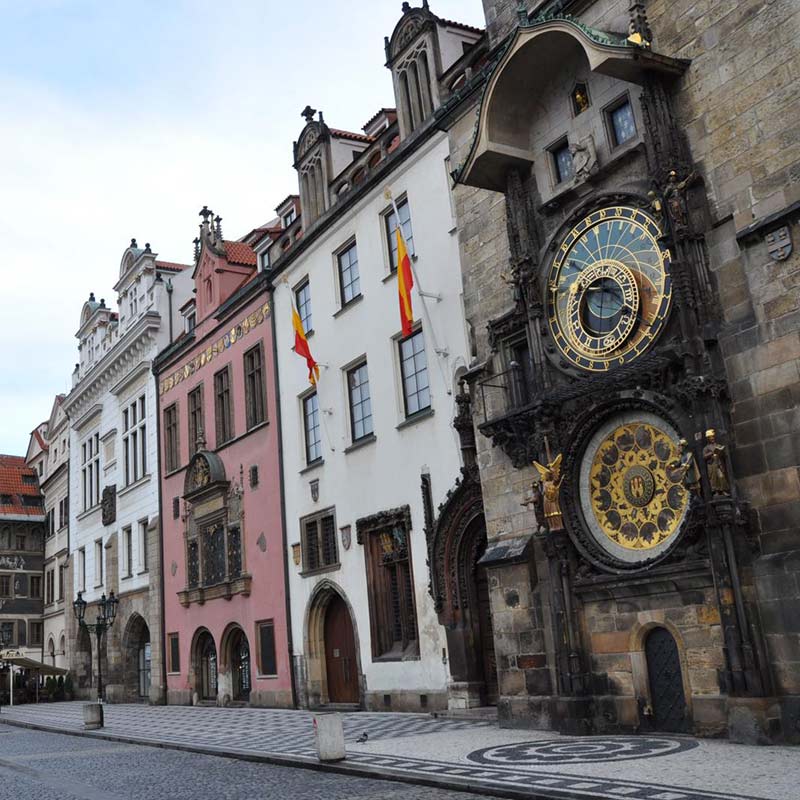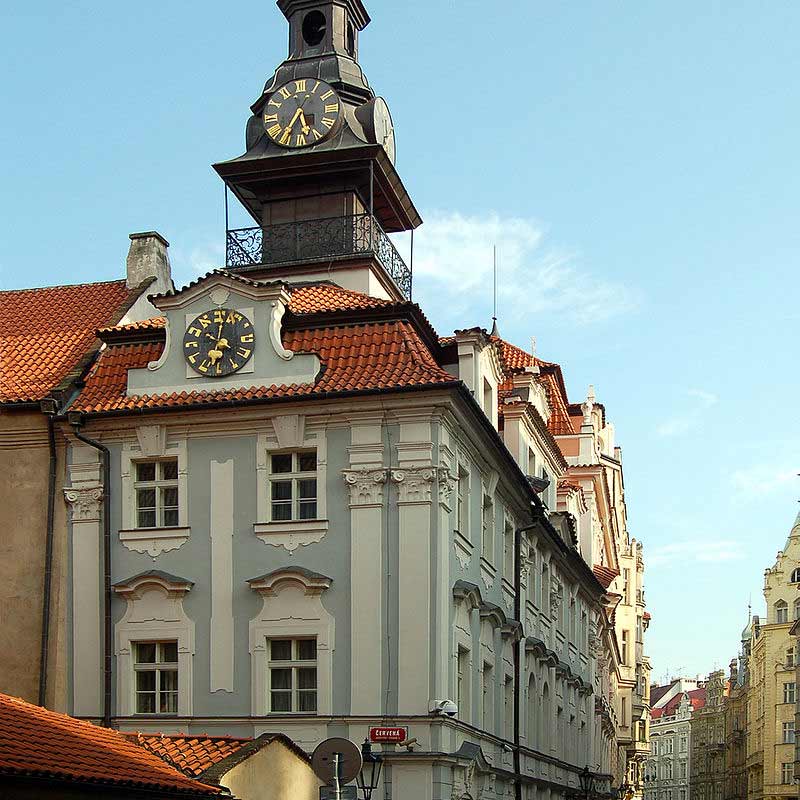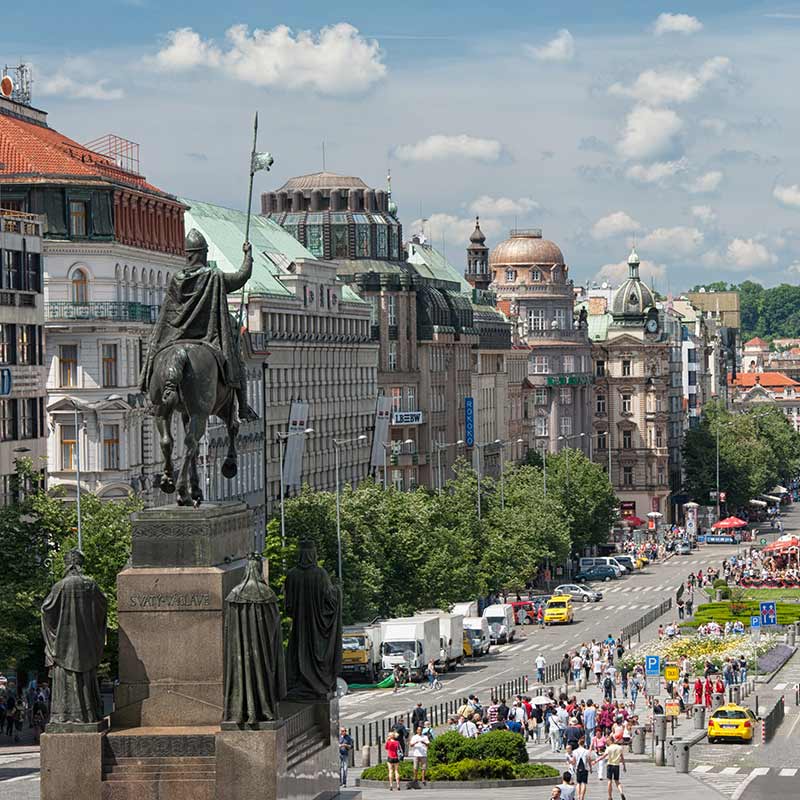Prague Castle
Prague Castle is perhaps the most easily recognised historical structure of Prague. The Castle is what gives Prague its fairy tale image. It also boasts of being the largest and best preserved castle in the world. The Crown Jewels are stored in the castle and it also forms the seat of the Czech government. The Gothic spires, baroque architecture and large gardens seem like pictures come alive from a fairy tale. Today the castle houses several museums.
Charles Bridge
The Charles Bridge crossing the Vltava River is a famous sight in Prague. The bridge connects the Prague Castle and the Old Town. Adorned with beautiful baroque statues and statuaries on both sides, it is a pleasing sight to behold. During the daytime, it is filled with tourists, street artists, musicians and vendors. At night, it magically transforms into a serene and lonely bridge, perfect for a romantic, moonlight walk.
Old Town Square & Astronomical Clock
The astronomical clock at the Old Town Square is the oldest functioning clock in the world today. To truly appreciate the splendour of this clock, view the procession of the twelve apostles that takes place after every hour. Christ is followed by his disciples while the death bell tolls the statue of a Turk. The Old Town Square also houses the St. Nicholas Church, Tyn Cathedral and the Old Town Hall. The views from the Old Town Hall are spectacular and present Prague, in all its glory.
Church of Our Lady Victorious and Holy Infant of Prague
The wax statue of the Holy infant Jesus of Prague, housed in the Church of Our Lady Victorious, is definitely worth a visit, regardless of your faith. It is a holy pilgrimage sight where thousands of visitors come every year to pay homage to the statue of Infant Jesus. There are many legends associated with this statue. It is said to have saved Prague from the ravages of war. Many believe the statue holds magical powers, particularly for would-be mothers. The altar where Infant Jesus rests is also adorned with other figures made from gold and silver.
Josefov
Josefov or the Jewish quarter is left of the Jewish ghetto from the 13th century. Most of the ghetto was destroyed in the 19th century. At the Jewish quarter you can visit the Spanish synagogue, Klaus synagogue, Maisel synagogue, Pinkas synagogue, Old New synagogue and the Jewish Town Hall. Perhaps, the most significant and moving sight in Josefov is the Jewish cemetery. As the space for burying the dead began to be scarce, there were burials on top of the existing bodies.
Dancing House
The Dancing House stands apart from the baroque, art nouveau and renaissance buildings in Prague. The structure itself resembles a pair of dancers and is located on the riverfront of the Vltava River. It is also known as Fred & Ginger house after the famous dancers or as the Drunk House. A French restaurant at the top of the building offers beautiful views of Prague.
Wenceslas Square
The Wenceslas Square is a huge famous boulevard and is named after the patron saint of Prague, ‘St Wenceslas’. It is lined with cafes, restaurants, shops and hotels. The Wenceslas Square is actually more of a lengthy boulevard than an actual square. It also forms the nucleus for the happening nightlife of Prague. Wenceslas Square conflates with the old and new. It has also been a witness to the many historic events of Prague.
Vysehrad Castle
The Vysehrad Castle is perched on a hill above the Vltava River. This castle is known as the birthplace of Prague. It was here that Princess Libuse foresaw the vision of Prague. Here, you can visit the originals of several baroque statues from Charles Bridge. The St Martin’s Rotunda, though not open to public, is well worth a glance. The National cemetery at the castle is home to famous personalities of Prague, such as Alfons Mucha, Jan Neruda and Bedrich Smetana.
Loreta
Loreta forms one of the many pilgrimage attractions in Prague. The Loreta was built with the intention of replicating the original home of the Virgin Mary, ‘Santa Casa’. It was founded in the year 1626, by Katerina Lobkowicz. The star attraction of the building is obviously the Santa Casa. It is nestled at the centre of the building. A beautiful red altar, adorned with intricate silver works and relief panels on the walls, make a splendid greeting sight. The Bell Tower, Church of the Nativity of our Lord, Arcade and the Treasury are well worth visiting.








